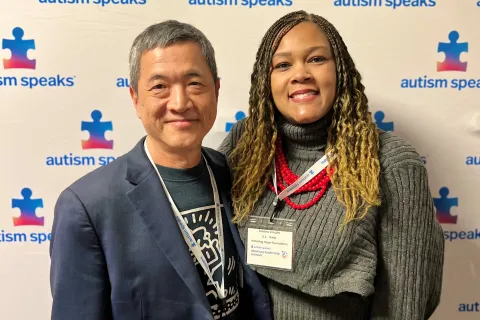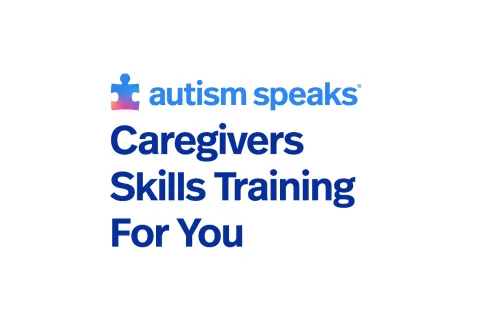Study: Eye Contact Declines Early in Babies Who Later Develop Autism
High-tech eye tracking study finds what may be earliest clear sign of autism; suggests possible window for very early intervention
November 6, 2013In November’s ground-breaking report, researchers describe measurable decreases in in eye contact between 2 and 6 months of age in babies who went on to develop autism spectrum disorder (ASD). The babies actually started out with typical eye-gaze patterns. But month by month, they showed steady decreases in the amount of time they looked at a caregiver’s eyes in a video. Baby sibs who did not develop ASD showed the opposite pattern – with eye contact increasing month by month.
“Such an early decline in eye contact would represent one of the earliest signs of autism identified to date,” emphasizes developmental pediatrician Paul Wang, Autism Speaks senior vice president for medical research. “It may also suggest a new window of opportunity for effective early intervention, as eye contact is so crucial for learning and the normal development of social skills.”
The findings – by Ami Klin and Warren Jones of Atlanta’s Marcus Autism Center and Emory University, appeared online in the journal Nature. Dr. Klin is also a principle investigator in Autism Speaks Baby Siblings Research Consortium.
‘Baby Sibs’ research continues to yield important findings
For good reason, much of the search for autism’s earliest signs and symptoms has involved the younger siblings of children already diagnosed with ASD. Because autism tends to run in families, these “baby sibs” have a greatly increased risk of developing the disorder.
“By studying high-risk infants, the researchers in Autism Speaks Baby Siblings Research Consortium are deepening our understanding of autism’s early development,” comments Alycia Halladay, Autism Speaks senior director for environmental and clinical sciences. “Ultimately,  these discoveries will help us identify what can make an important difference in a baby’s development.”
these discoveries will help us identify what can make an important difference in a baby’s development.”
In their study, Drs. Jones and Klin used eye-tracking technology to measure the way infants look at and respond to social cues in a video of a friendly caregiver. (See images at right.)
They studied 110 infants, 59 of whom were at high risk for autism because each had an older sibling on the spectrum. The other 51 had no known relatives with autism.
The researchers tested each infant 10 times between 2 and 24 months. Initial levels of eye contact for both groups were similar. But infants who did not develop autism increased their eye contact over time, while eye contact steadily declined among the 13 infants later diagnosed with autism. (Twelve of the 13 were from the high-risk baby siblings group.)
In addition, those infants whose levels of eye contact diminished most rapidly were the most disabled by symptoms of autism at age 3.
Subtle differences detectable only with technology
However, parents shouldn’t worry if an infant doesn’t always meet their eyes, the researchers caution. The changes they documented with technology were not visible to the naked eye. In fact, earlier eye-gaze studies done without eye-tracking technology failed to capture the pattern.
The new results also support the strong role that genetic and prenatal factors play in the development of ASD, Dr. Wang adds. “Some people have been skeptical of the strength of these factors because some affected children appear to develop typically at first, but then show a regression in language and social skills shortly before their second birthday,” he explains. “The new eye-gaze findings suggest that subtle symptoms can be present at a very young age and that these very early symptoms may continue to worsen over time.”
“We don’t know yet whether these differences in eye gaze might someday be used to diagnose autism,” Dr. Wang adds. The study was far too small to make such a conclusion, he explains. “Rather, researchers must take the new findings as a call to arms. Are there interventions that may be helpful in the earliest months of life? If we start treatment in that early time window, can we minimize – or even avoid – the problems that might otherwise arise?”








